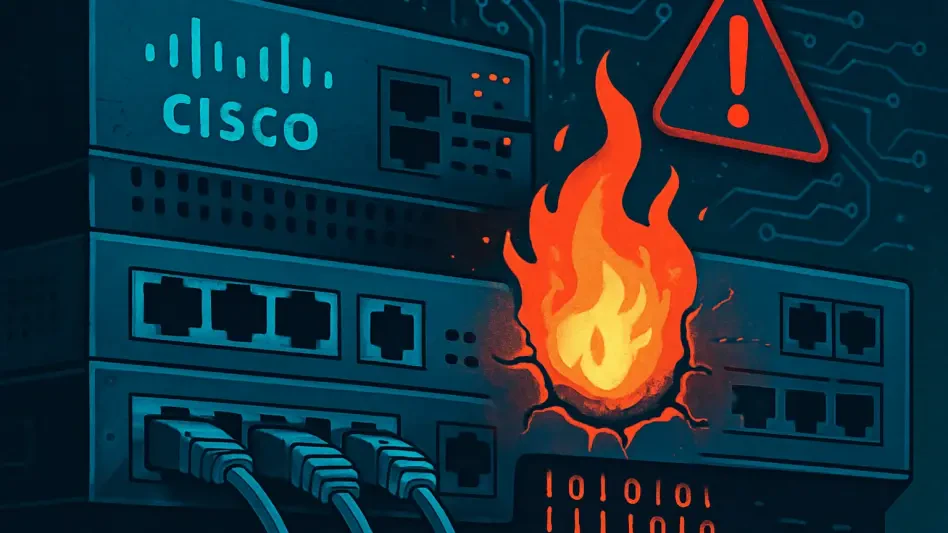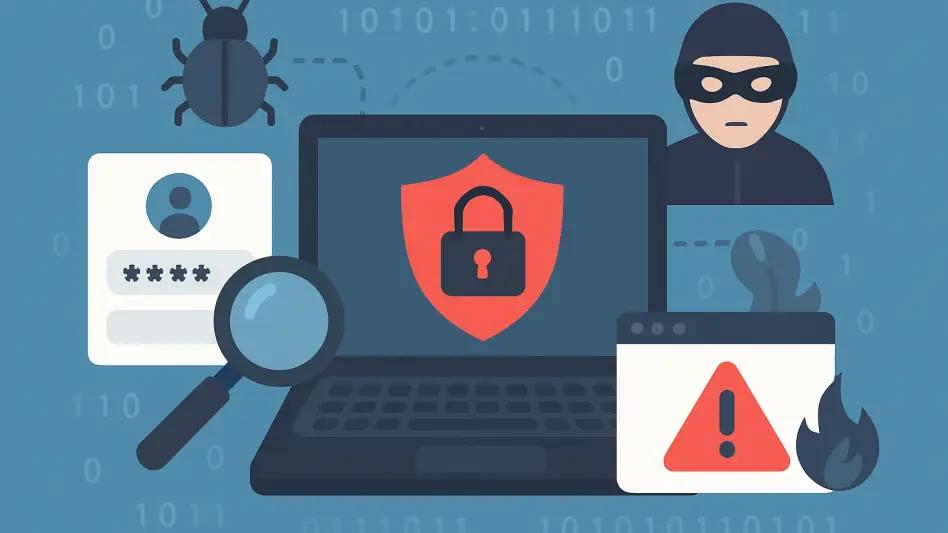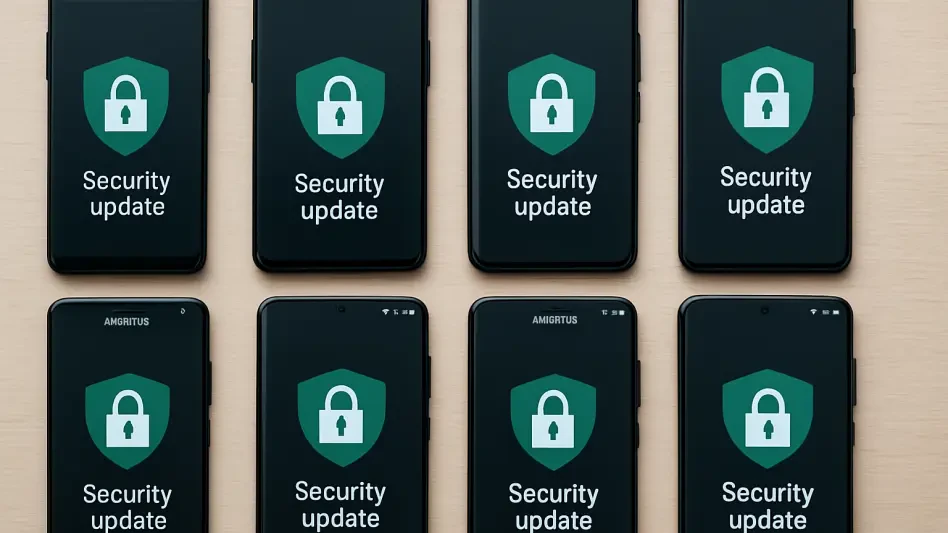What happens when a hidden flaw in one of the world’s most trusted networking systems becomes a gateway for chaos, threatening the stability of critical infrastructure worldwide? Right now, in 2025, a zero-day vulnerability in Cisco IOS and IOS XE software, identified as CVE-2025-20352, is sending shockwaves through the cybersecurity community. This isn’t just a minor glitch—it’s a high-severity threat with a CVSS score of 7.7, actively exploited by attackers to cripple or control critical infrastructure. With millions of devices at risk, the stakes couldn’t be higher for organizations relying on Cisco to power their networks.
This discovery isn’t a distant concern but an urgent crisis demanding immediate action. The vulnerability, buried in the Simple Network Management Protocol (SNMP) subsystem, allows attackers to crash systems with a few crafted packets or, worse, seize full root access. As Cisco equipment underpins global businesses, governments, and essential services, the potential fallout from this flaw could disrupt operations on an unprecedented scale. Understanding the depth of this threat is the first step toward safeguarding vital systems.
Why a Hidden Flaw in Cisco Systems Spells Trouble
Deep within the architecture of Cisco’s widely used software lies a critical vulnerability that has caught the attention of cybersecurity experts worldwide. Known as CVE-2025-20352, this zero-day flaw in the SNMP subsystem poses a severe risk due to its ability to be exploited with minimal effort. A stack overflow issue enables attackers to send specially crafted packets, potentially leading to catastrophic outcomes for affected networks.
The danger is amplified by the fact that this vulnerability is already under active exploitation. Attackers can leverage compromised credentials to target devices, making this an immediate concern for IT teams. Unlike theoretical risks, this flaw has real-world implications, threatening the stability of corporate and critical infrastructure networks that rely on Cisco’s technology.
The scope of potential damage is staggering when considering how integral Cisco systems are to daily operations across industries. From financial institutions to energy grids, a breach or disruption caused by this flaw could result in significant downtime or data loss. This hidden threat underscores the pressing need for heightened vigilance and rapid response to protect against looming attacks.
Cisco’s Pivotal Role in Global Connectivity
Cisco’s dominance in networking hardware and software makes any security flaw in its systems a global concern. The company’s devices, running IOS and IOS XE software, form the backbone of communication for countless organizations, including Fortune 500 companies, government agencies, and critical infrastructure sectors. A vulnerability in these systems isn’t just a localized issue—it’s a potential trigger for widespread chaos.
Data from the Shodan search engine reveals a sobering reality: approximately two million Cisco devices are exposed on the internet, many with SNMP interfaces accessible to potential attackers. This vast exposure, combined with the high CVSS score of 7.7 for CVE-2025-20352, paints a grim picture of the risk landscape. IT departments must recognize that a single exploited device could serve as an entry point for broader network compromise.
The implications extend beyond technical disruptions to economic and societal impacts. A successful attack on Cisco-powered networks could halt operations in hospitals, disrupt supply chains, or even compromise national security systems. This vulnerability highlights the critical importance of securing the foundational technologies that keep the world connected.
Dissecting the SNMP Flaw: Disruption and Domination
At the heart of this crisis is CVE-2025-20352, a stack overflow vulnerability in the SNMP subsystem of Cisco IOS and IOS XE software. This flaw creates two distinct but equally devastating attack vectors: denial-of-service (DoS) attacks that can crash devices with low-privilege access, and remote code execution that grants attackers root control with higher privileges. Both outcomes pose significant risks to system integrity.
Any Cisco device with SNMP enabled is a potential target, spanning a wide range of hardware from enterprise switches to industrial routers. The ability to execute arbitrary code as root means attackers could install malware, steal sensitive data, or pivot to other parts of the network. Shodan data underscores the scale of exposure, with millions of devices at risk of being weaponized by malicious actors.
Cisco’s own reports confirm that exploitation is not a hypothetical scenario but an ongoing reality. Attackers are actively targeting vulnerable systems, often using stolen administrator credentials to maximize damage. This dual threat of disruption and control elevates the urgency for organizations to address this vulnerability before it’s exploited against them.
Industry Reactions: Cisco’s Alerts and Expert Warnings
Cisco has issued stark warnings about the active exploitation of CVE-2025-20352, noting that attackers are leveraging compromised admin accounts to gain unauthorized access. The company’s latest security bulletin emphasizes the severity of the situation, urging immediate action to mitigate risks. This admission from a leading tech giant signals the gravity of the threat facing global networks.
Beyond Cisco’s alerts, the broader context of recent security updates reveals systemic challenges. In September 2025, Cisco patched 14 vulnerabilities across its platforms, with eight classified as high severity. This pattern suggests that maintaining robust security in complex software ecosystems remains a persistent struggle, even for industry leaders like Cisco.
Cybersecurity experts are sounding the alarm as well, stressing the lack of effective temporary fixes for this specific flaw. Many point out that the combination of active exploitation and widespread device exposure creates a perfect storm for potential breaches. Their consensus is clear: delaying action is not an option when the risk of total system compromise looms large.
Protecting Cisco Environments: Practical Defenses
Mitigating the risks of this zero-day vulnerability requires swift and decisive steps. Cisco has released patches, with IOS XE version 17.15.4a addressing the flaw for devices like Meraki MS390 and Cisco Catalyst 9300 switches. Applying these updates should be the top priority for organizations to close the door on potential exploits.
Temporary mitigations, such as excluding specific object IDs (OIDs) in SNMP configurations, are available but come with caveats. These measures can disrupt normal SNMP functionality, rendering them impractical for many environments. Instead, restricting SNMP access to trusted users and devices offers a more viable layer of defense while patches are deployed.
Continuous network monitoring is also essential to detect signs of compromise early. Organizations must go beyond reactive fixes by adopting a proactive security posture, regularly auditing device configurations, and limiting exposure of critical systems to the internet. Building resilience against this threat demands a comprehensive approach that addresses both immediate vulnerabilities and long-term security gaps.
Reflecting on this critical issue, it becomes evident that the zero-day vulnerability in Cisco systems poses a formidable challenge to global cybersecurity. The scale of exposure, coupled with active exploitation, leaves little room for complacency among IT professionals. Many organizations have scrambled to apply patches and tighten access controls, racing against time to prevent breaches.
Looking ahead, the lessons from this incident point toward a need for stronger collaboration between vendors and users to anticipate and address vulnerabilities before they escalate. Prioritizing rapid patch deployment and investing in robust monitoring tools emerge as key strategies to avert similar crises. As threats continue to evolve, staying one step ahead proves to be the only way to safeguard the networks that power modern life.








